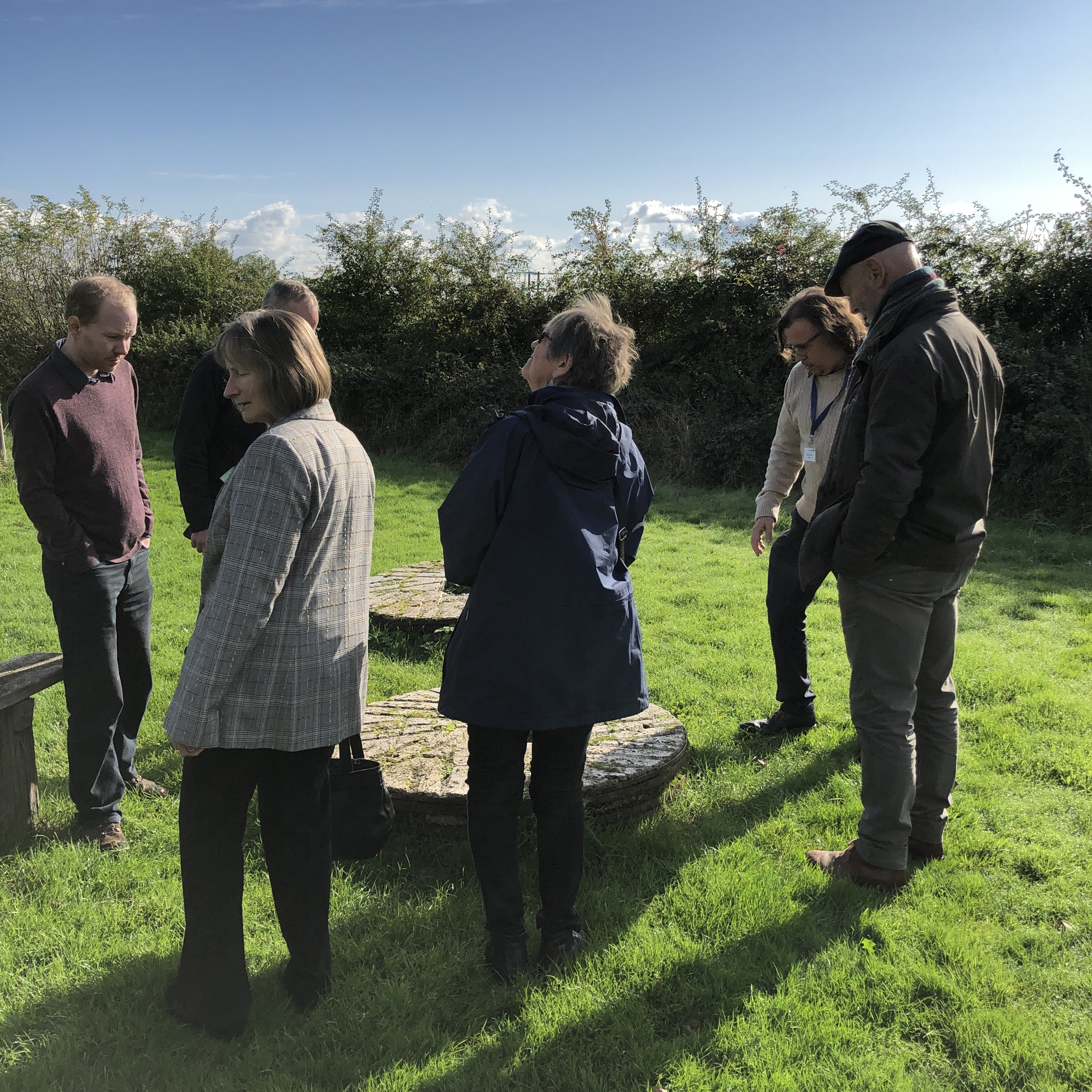
Participants at the ‘Reap the Rewards: Benefiting from Rural Networks’ event explore Avoncroft Museum of Historic Buildings, October 2019
At Staffordshire County Museum I find our collection of agricultural machinery and tools quite overwhelming. It’s not a subject area I feel confident in. Agriculture and farming is an important part of Staffordshire’s history, so it’s a key collection but the objects are often very large and difficult to display and interpret. Compared to other collections, they aren’t always visually interesting, and they can be difficult to relate to.
In October I took part in ‘Reap the Rewards: Benefiting from Rural Networks’ at Avoncroft Museum of Historic Buildings in Bromsgrove. It was a seminar for people working in museums with agricultural and rural collections. I went along to the session to meet others who were in a similar situation, to gain more knowledge on how to interpret and to find out more about the Rural Museum Network. Here are some things I learned on the day I’d like to share
1. Creating relevant rural experiences with your collection or site.
It doesn’t have to be standard display techniques, i.e. an object with a label, that gets people interested in rural activities and objects. Nick Sturgess, Head of Collections & Interpretation at Avoncroft explained how rather than just showing visitors the process of milling and explaining how it works, the visitors can taste bread made from flour that has been milled there, which additionally provides them with extra income as they then sell the flour in the museum shop.
What I hadn’t realised is there is always a way to relate your agricultural object to visitors’ everyday lives, whether that is food production, animals, workers rights etc. And a sensory experience is even better because it is something that will stay with them longer.
2. Multi layered labels
Usually when writing object labels, we are told that less is more, we don’t want to fatigue visitors with lots of text. Just 50 words will usually suffice when creating text for an object.
Simon Carter, the Director at Avoncroft explained that more substantial labels are actually a blessing with these types of collections and showed us an example that they have installed around the site at Avoncroft. The label briefly explained where the building came from, what it was and what it was used for but then it was split into three colour coded sections; People, History and Rescue. It was a way of appeasing different types of visitors, not alienating the specialists and enthusiasts and including the average visitor who might be more interested in the people that used the building than how it was built or rescued.
By creating themes within your labels, visitors can easily pick what is most interesting to them and choose what they read about.
3. Learning about the RMN
In the afternoon we discussed our issues within our own collections and what the Rural Museum Network could do to help. The topic of storage came up as its often hardier rural collections that have the worst storage, with objects often being left in sheds or even outside exposed to the elements, but also admitting that’s ok as long as there is a plan in place. Museums don’t have the resources to deal with everything! The Lace Guild explained the difficulty in recruiting new members and expertise dying out in the field, they talked about diversifying their activities and collections to make them more accessible to younger people, with things like yarn bombing which is a fairly new phenomenon and fits in with the protest culture that is popular at the moment, especially with young people. RMN host Chris Copp addressed these issues and talked about what the aims of the network were including ideas for a distributed national collection.
This part of the seminar showed me that whatever you’re grappling with, collections-wise, in your museum, the specialist networks are a great source of knowledge and are there to help.
All in all, I really enjoyed the session at Avoncroft. It is always good to get outside your own collection and draw inspiration from another organisation. I felt that the session not only allowed me to network with other museum professionals, but I found that the solutions are often much simpler than I had imagined. Avoncroft is a prime example of using every resource you have available and being innovative can be as simple as changing your object labels. In the afternoon I found out more about the Rural Museums Network and how it can assist me in the future when working with the agricultural collections. The idea of the distributed national collection is an idea I had vaguely heard before, but it was great to be involved in discussing its potential and to hear from people who have been working on it.
I am the Collections Assistant at Staffordshire Archives and Heritage. I studied at University of Leicester, History of Art and Art Museum and Gallery Studies MA but have worked mostly with social history collections. In Staffordshire I have recently been involved in moving the collection into new stores, this has made me confront our large agricultural collection which in the past has garnered less attention than other subject areas in the museum.
Melanie Williamson

